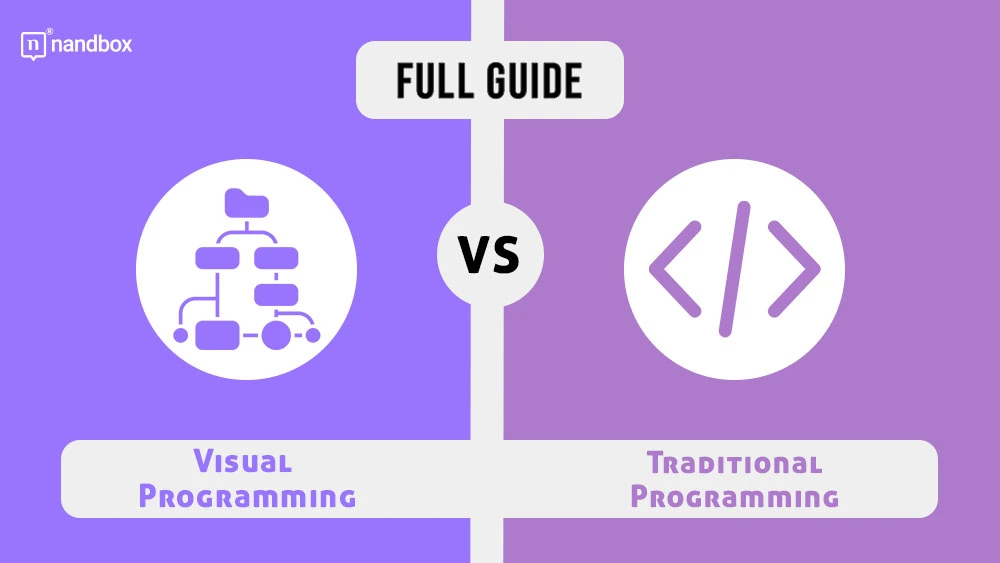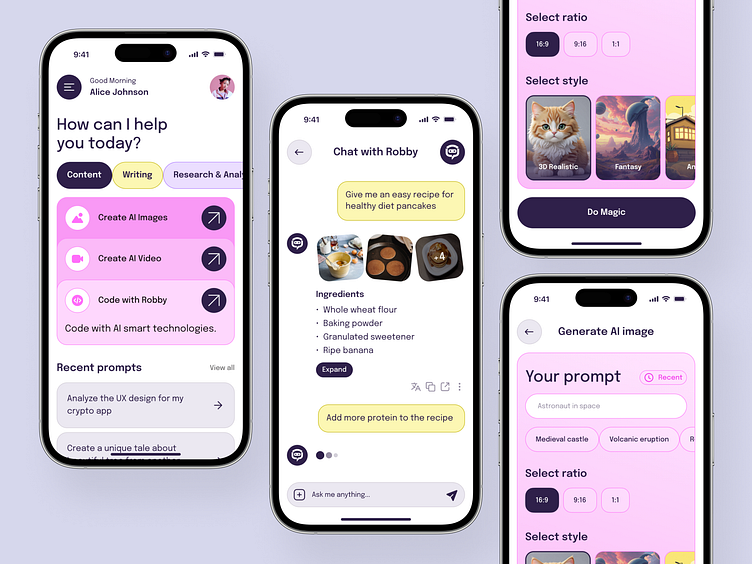Unlocking Innovation: How Democratized Development Tools Are Reshaping Technical Landscapes
Breaking down barriers to empower everyone with the ability to create and innovate
I've seen firsthand how traditional development approaches have created bottlenecks in innovation. Today, we're witnessing a revolution where sophisticated tools are becoming accessible to everyone, regardless of their technical background. Let me walk you through how these democratized development tools are transforming our technical landscape and unlocking unprecedented innovation.
The Technical Barrier Problem
For decades, I've observed how software and AI development have been locked behind formidable barriers of specialized expertise. Creating even simple applications required deep knowledge of programming languages, frameworks, and development environments that took years to master.

This technical gatekeeping has had profound economic consequences. Small businesses and startups without access to expensive development talent have been unable to compete with tech giants, creating an uneven playing field. Meanwhile, the skills gap between technical experts and business users with valuable ideas continues to widen, leaving countless innovations unrealized.
Traditional Development Bottleneck
The traditional development process creates significant bottlenecks that slow innovation:
flowchart TD
idea[Business Idea] --> wait1[Wait for Developer Availability]
wait1 --> req[Requirements Gathering]
req --> wait2[Wait for Development Resources]
wait2 --> dev[Development]
dev --> qa[Quality Assurance]
qa --> wait3[Wait for Deployment Window]
wait3 --> deploy[Deployment]
deploy --> feedback[Feedback]
feedback --> wait4[Wait for Update Cycle]
wait4 --> revisions[Revisions]
classDef waiting fill:#FFCCBC,stroke:#FF5722
class wait1,wait2,wait3,wait4 waiting
I've seen how traditional development approaches create bottlenecks in innovation pipelines. When business users identify an opportunity, they must wait for technical resources, explain their requirements (often imperfectly), wait for development, review results, and repeat this cycle multiple times. This process can take months, by which time the market opportunity may have passed.
The Democratization Revolution
We're now witnessing a profound shift from complex coding requirements to accessible development environments. This revolution isn't happening by accident—it's driven by several converging technological forces that are fundamentally changing who can create software and how they do it.
Key Drivers of Development Democratization
The following factors have contributed significantly to making development accessible:
The proliferation of open-source tools has created vast libraries of pre-built components that developers and non-developers alike can leverage. Meanwhile, cloud computing has removed infrastructure barriers, allowing anyone to deploy applications without managing physical servers or complex configurations.
Perhaps most revolutionary has been the emergence of Large Language Models (LLMs), which have transformed how humans interact with computers. As highlighted in research on LLM-powered development, these models have fundamentally changed who can build software and how quickly they can do it. The democratization is profound—you no longer need to understand programming languages, software architecture, or deployment pipelines. You simply need to understand your problem and articulate it clearly.

I've been amazed by real-world transformation stories of non-technical creators building functional applications. A marketing manager created a complex data visualization dashboard over a weekend. A small business owner developed a custom CRM system tailored to their unique workflow. These aren't isolated anecdotes—they represent a fundamental shift in who can create software.
Technology industry insights consistently reveal democratization as a major trend that's reshaping how we think about development capabilities. What was once the exclusive domain of trained programmers is now accessible to anyone with a clear vision of what they need.
Breaking Down the New Development Paradigm
Today's democratized development landscape offers a spectrum of tools catering to different skill levels and needs. These tools fundamentally change how we approach creating software and digital solutions.
The Spectrum of Democratized Development Tools
Modern development tools range from visual interfaces to AI-assisted coding:
flowchart LR
subgraph "Most Accessible"
visual[Visual Development Environments]
drag[Drag-and-Drop Interfaces]
end
subgraph "Middle Ground"
natural[Natural Language Processing\nfor Code Generation]
templates[Template-Based Development]
end
subgraph "Advanced Assistance"
ai[AI-Assisted Development]
hybrid[Hybrid Code/Visual Environments]
end
visual --> drag
drag --> natural
natural --> templates
templates --> ai
ai --> hybrid
Visual development environments provide intuitive interfaces where users can see what they're building in real-time. Drag-and-drop interfaces allow creators to assemble applications from pre-built components without writing code. Natural language processing enables users to describe what they want in plain English, with AI translating those descriptions into functional code.
PageOn.ai's AI Blocks approach exemplifies this new paradigm. It enables users to fluidly combine components without understanding complex logic. By breaking down technical concepts into visual building blocks, PageOn.ai allows anyone to create sophisticated visualizations and applications through an intuitive interface.
Traditional vs. Democratized Development Workflows
Comparing the time and complexity differences between approaches:
The role of intuitive interfaces in flattening learning curves cannot be overstated. When tools are designed with user experience as a priority, the barrier to entry drops dramatically. Users can focus on their ideas rather than the technical implementation details, leading to faster innovation and more creative solutions.

Beyond Technical Accessibility: Broader Impacts
The democratization of development tools extends far beyond just making technology more accessible. It's creating profound societal and economic shifts that are reshaping how we think about innovation, inclusion, and opportunity.

One of the most significant benefits is in diversity and inclusion. When development barriers fall, we see a much wider range of perspectives contributing to technology creation. As noted by Forbes Tech Council, democratizing development helps reduce AI bias—often embedded in algorithms created by homogenous teams—by including more diverse voices in the process.
Economic Impact of Democratized Development
How accessible tools reduce costs across the development lifecycle:
flowchart TD
start[Traditional Development Costs] --> red1[Reduced Developer Hours]
start --> red2[Reduced Infrastructure Costs]
start --> red3[Faster Time to Market]
start --> red4[Lower Maintenance Costs]
red1 --> savings[Total Cost Savings]
red2 --> savings
red3 --> savings
red4 --> savings
savings --> reinvest[Reinvestment in Innovation]
savings --> expand[Expanded Market Access]
savings --> compete[Competitive Advantage]
classDef savings fill:#FFEBEE,stroke:#FF5722
class savings savings
Economic democratization occurs through dramatically reduced development costs. Small businesses and startups can now create custom solutions that previously would have required significant investment in technical talent. This levels the playing field and allows for more competition and innovation across all sectors of the economy.
Tools for industry insights show that democratization is affecting various sectors differently. Some industries with historically high technical barriers, such as healthcare and finance, are seeing particularly dramatic transformations as non-technical domain experts can now directly implement their ideas.
In education, the impact is equally profound. Transforming classroom tech stack tools allows educators to teach development concepts much earlier. Students no longer need to master complex programming languages before building functional applications, opening up technical creativity to a much wider range of learners.
Case Studies: Democratization in Action
To truly understand the impact of democratized development tools, let's look at real-world examples of how they're transforming what's possible for non-technical creators.
The Marketing Manager's Dashboard
A marketing professional with no coding experience created a complex data visualization dashboard over a weekend, integrating multiple data sources to track campaign performance in real-time.
Tools Used: No-code visualization platform, API connectors
Time Saved: Estimated 8 weeks of development time
The Custom Small Business CRM
A retail store owner built a custom customer relationship management system tailored to their unique workflow and customer journey, without writing a single line of code.
Tools Used: Visual app builder, database templates
Cost Savings: Estimated $25,000 in development fees
The STEM Educator's Interactive Models
A high school science teacher created interactive 3D models of complex biological processes, making abstract concepts tangible for students.
Tools Used: STEM presentation tools, AI visualization assistants
Impact: 27% improvement in student comprehension
The Executive's Operations Tool
A COO built a custom workflow automation tool that integrated with existing enterprise systems, streamlining operations without waiting for IT resources.
Tools Used: Enterprise low-code platform, API integration hub
ROI: 300% in the first year through efficiency gains

PageOn.ai has been particularly transformative in enabling users to convert abstract ideas into structured visual content through simple conversation. A product manager I worked with used PageOn.ai to transform a complex technical architecture into a clear, visually compelling diagram that both technical and non-technical stakeholders could understand—all in under an hour.
Impact of Democratized Tools Across User Types
How different user groups benefit from democratized development:
Challenges and Limitations in Democratized Development
While democratized development tools offer tremendous benefits, I believe it's important to acknowledge their challenges and limitations. Understanding these constraints helps users make informed decisions about when and how to use these tools.
| Challenge | Impact | Potential Solutions |
|---|---|---|
| Simplicity vs. Functionality Trade-offs | Limited customization options for complex use cases | Hybrid approaches combining visual tools with code extensions |
| Security and Governance Concerns | Potential vulnerabilities when non-experts build systems | Built-in security templates and automated compliance checking |
| Performance Limitations | Less optimized applications compared to custom code | Performance monitoring and optimization suggestions |
| Integration Complexities | Challenges connecting with legacy or specialized systems | Pre-built connectors and API abstraction layers |
| Professional Developer Role Uncertainty | Confusion about division of responsibilities | Clear governance frameworks and collaboration models |
Balancing simplicity with functionality remains one of the biggest challenges. While democratized tools make basic and intermediate development accessible, they may struggle with highly customized or performance-critical applications. There will always be scenarios where traditional development approaches are more appropriate.
When to Use Different Development Approaches
Decision framework for selecting the appropriate development method:
flowchart TD
start[Project Requirements] --> q1{Critical System?}
q1 -->|Yes| trad[Traditional Development]
q1 -->|No| q2{Complex Customization?}
q2 -->|High| hybrid[Hybrid Approach]
q2 -->|Low/Medium| q3{Technical Expertise?}
q3 -->|Available| q4{Time Constraints?}
q3 -->|Limited| demo[Democratized Tools]
q4 -->|Tight| demo
q4 -->|Flexible| q5{Budget?}
q5 -->|Limited| demo
q5 -->|Adequate| hybrid
Security and governance considerations become increasingly important as development expands beyond IT departments. Organizations need clear policies about what types of applications can be built by citizen developers and what guardrails should be in place to protect data and systems.
The role of professional developers is also evolving in this landscape. Rather than being replaced, their focus shifts toward creating components, establishing patterns, and handling the most complex aspects of systems while empowering business users to build solutions directly.
The Future Landscape: Where Democratization Is Heading
The democratization of development tools is still in its early stages, with significant advancements on the horizon. I'm particularly excited about several emerging trends that will further transform how we create and interact with technology.

AI-assisted development is becoming increasingly sophisticated. Future tools will not only generate code from descriptions but will understand context, suggest optimizations, and learn from user preferences to provide increasingly personalized assistance. The line between describing what you want and having it built will continue to blur.
PageOn.ai's Deep Search capability represents an exciting advancement in this space. It will transform asset integration in development by allowing users to describe the type of component they need in natural language, then automatically finding and adapting the most suitable options from vast libraries of pre-built elements.
Emerging Trends in Democratized Development
Projected growth and adoption of key technologies:
Natural language interfaces for technical creation will become increasingly sophisticated. Rather than learning specific commands or navigating complex menus, users will simply describe what they want to accomplish in conversation, and AI will translate those intentions into functional applications.
I expect to see a convergence of professional and democratized development environments. The sharp distinction between "developer tools" and "business user tools" will fade, replaced by a spectrum of capabilities that adapt to the user's expertise and needs. Professional developers will leverage the speed of democratized tools, while business users will have access to more technical capabilities as needed.
Educational institutions are already preparing for this future. Schools can implement edtech innovations that expose students to these new development paradigms early, ensuring they're prepared for a world where technical creation is accessible to everyone.
Getting Started with Democratized Development
If you're interested in exploring democratized development tools for yourself or your organization, here's a structured approach to get started effectively.

Assessing Organizational Readiness
Begin by evaluating your organization's culture, technical capabilities, and governance structures. Organizations that embrace experimentation, have clear data governance policies, and support cross-functional collaboration tend to succeed with democratized development initiatives.
Evaluating the Right Tools
Different democratized development tools excel in different scenarios. Consider factors like:
- Type of applications needed (data visualization, process automation, full applications)
- Technical skill levels of intended users
- Integration requirements with existing systems
- Security and compliance needs
- Scalability requirements as usage grows
Implementation Framework
A phased approach to introducing democratized development:
flowchart LR
phase1[1. Pilot Project] --> phase2[2. Establish Governance]
phase2 --> phase3[3. Training Program]
phase3 --> phase4[4. Component Library]
phase4 --> phase5[5. Scale Deployment]
classDef phase fill:#FFF3E0,stroke:#FF8000
class phase1,phase2,phase3,phase4,phase5 phase
Best Practices for Supporting Non-Technical Creators
Success with democratized development requires more than just providing tools. Consider these best practices:
- Create a community of practice where users can share knowledge and solutions
- Develop templates and patterns for common use cases
- Establish clear documentation with examples and tutorials
- Provide access to technical mentors who can help overcome obstacles
- Celebrate and showcase successful projects to inspire others
Creating Governance Frameworks
As democratized development expands within an organization, governance becomes crucial. Establish clear policies around:
- Data access and security requirements
- Application approval and deployment processes
- Testing and quality assurance standards
- Maintenance responsibilities and support models
- Integration with enterprise architecture
PageOn.ai's conversational interface offers an excellent starting point for organizations new to democratized development. Its ability to turn fuzzy technical concepts into clear visual structures makes it particularly valuable for teams looking to improve communication between technical and non-technical stakeholders.
Transform Your Technical Ideas Into Clear Visual Expressions
PageOn.ai makes it easy to break down complex technical concepts into beautiful, understandable visualizations—no coding required. Start creating professional diagrams, flowcharts, and visual explanations through simple conversation.
Start Creating with PageOn.ai TodayEmbracing the Democratized Future
The democratization of development tools represents one of the most significant shifts in how we create technology in decades. By breaking down technical barriers, these tools are enabling a new wave of innovation from previously untapped sources.
As we've explored throughout this guide, democratized development isn't just about making things easier—it's about fundamentally changing who can participate in technical creation. From small business owners building custom solutions to educators creating interactive learning experiences, these tools are expanding the pool of creators and the range of problems they can solve.
While challenges remain, particularly around complexity, security, and governance, the trajectory is clear. The future of development will be increasingly accessible, with AI playing a crucial role in translating human intent into functional applications.
I encourage you to explore these tools for yourself. Whether you're looking to create your first application without code or seeking to empower your team with new capabilities, the barriers to entry have never been lower. The democratization revolution is here—and it's waiting for your contribution.
You Might Also Like
Enhancing Audience Experience with Strategic Audio Integration | Create Immersive Brand Connections
Discover how strategic audio integration creates immersive brand connections across podcasts, streaming platforms, and smart speakers. Learn frameworks and techniques to transform your marketing.
The Strategic GIF Guide: Creating Memorable Moments in Professional Presentations
Discover how to effectively use GIFs in professional presentations to create visual impact, enhance audience engagement, and communicate complex concepts more memorably.
Transforming Presentations: Strategic Use of Color and Imagery for Maximum Visual Impact
Discover how to leverage colors and images in your slides to create visually stunning presentations that engage audiences and enhance information retention.
The AI-Powered Pitch Deck Revolution: A Three-Step Framework for Success
Discover the three-step process for creating compelling AI-powered pitch decks that captivate investors. Learn how to clarify your vision, structure your pitch, and refine for maximum impact.
